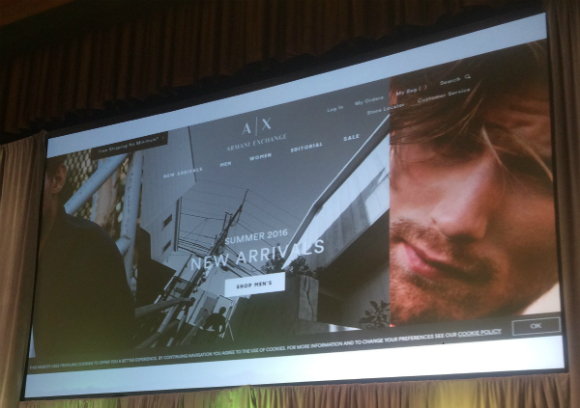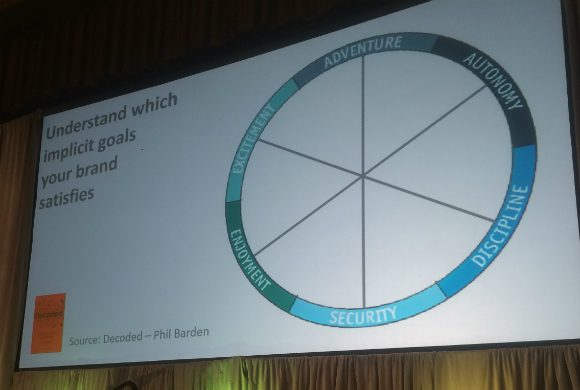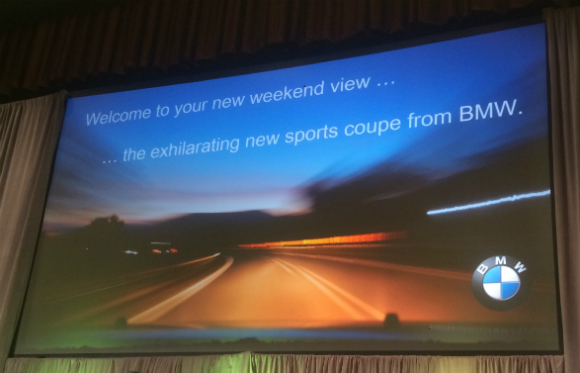Tim Ash Presents #ConvCon: Ending the War between Branding and Direct Response was originally published on BruceClay.com, home of expert search engine optimization tips.
Hi gang! You’re tuned in to Conversion Conference and the opening keynote by Tim Ash, founder of SiteTuners, author of Landing Page Optimization, and organizer of this conference.
I spoke with a gentleman sitting next to me, who works at an online kayak retailer who has watched the PPC space become increasingly competitive over the last 10 years: “That’s why I’m here. Now that we have all that expensive traffic, let’s make the most of it.” — John Hoge
And that’s why I’m here reporting — to help interested digital marketers understand how to convert more site visitors.
Tim Ash is on stage to present a brand new keynote, and a topic he is very interested in.
Tim asks how many in the crowd are direct response marketers? How many are in the branding and creative side — to the latter question, not as many people raise their hands. Tim’s going to bring the DR and branding worlds together.
Right now there’s a war going on between DR and branding. Here’s his agenda:
- Introducing the combatants
- Understanding branding better
- Bringing both sides together
Introducing the Combatants: Direct Response vs. Branding
The DR view of branding:
- Branding people are restrictive and shut down powerful ideas due to technicalities. Good ideas are shut down by branding people.
- They’re controlling. They micro-manage and are focused on timid compliance and correctness issues. In order to get a test up, it takes months of jumping over hurdles from the branding team.
- And branding people are unaccountable. What’s the ROI of brand?
- Branding people are visually obsessed at the expense of clarity or functionality.
- They recycle media. They insist on the same approved campaign materials across all channels.
- Their favorite phrase is “That’s off brand …” This is the fastest conversation ender.
What you usually see from a brand-heavy organization is:
 Who knows what to do what that? But it looks cool!
Who knows what to do what that? But it looks cool!
The branding people’s view of DR:
- DR folks are ignorant of the big picture.
- DR people are unprofessional — clueless clowns willing to try anything to make a dollar.
- They’re unethical. They’re willing to bend or break the rules to get results.
- DR folks are inconsistent and out of touch with all other campaigns.
- Their favorite phrase is “Let’s test that!” like that’s the solution for everything.
So you end up with something like this:
Are either one of these sides a flattering picture? No. No wonder we hate each other. But he’ll unify this.
Understanding Each Other Better
The traditional view of branding: something you project to the world.
Tim is going to describe branding in a way for all parties to relate to.
A brand is hard to change.
Think of it like a big aircraft carrier. It takes an entire mile for it to turn around.
Take a look at the search result for “Comcast Sucks.” It took Google half a second to return a quarter million results for that query. It’s going to be hard to change the momentum of an established brand.
Brands are ladders and shortcuts.
Think of a toothpaste brand and you’ll think of Crest or Colgate but there are 270 brands in your supermarket. There’s no hope of making money if you’re not the market leader. If you’re not at the top of the brand ladder, you lose. A brand is effectively a shortcut. Your subconscious does that decision automatically and tunes out other options. You’re not even in the consideration set.
A brand is a frame.
The frame creates the context. The unconscious backgrounds frame the foreground experience. Folgers instant coffee TV commercials was a campaign where Folgers coffee instant crystals replaced the regular coffee and then patrons of very expensive, top end restaurants were asked on hidden camera what they thought of the coffee.
But this was a lie. Folgers wasn’t the brand frame for the experience. The famous restaurant was. Brands provide the context which increases the perceived value of the product.
The American Marketing Association defines brand in a very visual way:
“A name, term, design, symbol, or any other feature that identifies one seller’s good or service as distinct from those of other sellers. The legal term for brand is trademark. A brand may identify one item, a family of items, or all items of that seller. If used for the firm as a whole, the preferred term is trade name.”
An example of a brand that has multiple strong visual associations is Marlboro cigarettes. Think tall black letters, or solid red, or lone cowboy on the range and you know that the brand is Marlboro. The underlying mental model is rugged masculinity and independence.
So the upside of not having the brand is it means you don’t have the power, but you have the freedom to see what resonates with your audience. Most of us here are on the DR side. We’re trying to move the needle. We’re not constrained by our brand – because we don’t have a brand.
Both branding and direct response are right. And both are blind.
The Brand Lives in the Minds of the Customer
“When a customer enters my store, forget me. He is king.” — John Wanamaker
“Your brand is whatever your customer (or prospect) says it is.” — Groundswell
A brand is the underlying mental associations evoked in people’s head.
So how do we align the presentation with the brand frame? Understand which implicit goals your brand satisfies.
Here’s an example ad Tim made:
It hits these areas on the wheel of human motivation:
Does this work? Yes, because the ad and the brand frame have high congruence. This same thought experiment doesn’t work with Volvo’s logo on the example ad, which has a brand frame high on the security and discipline and autonomy areas. Did you know that Volvo has tried to sell high-performance sports coups for years but no one is buying them? It’s hard to turn that brand around.
Fighting on the Same Side: A Framework for Success
Here’s what success looks like if you unify branding and direct response.
- Reality check your brand. Go to that implicit goal chart. Think of what your brand is activating in the minds of visitors. Map the reality of your current brand frame.
- Understand the unconscious motivations of your offer. What subconscious implicit motivations work for them?
- Create messaging that is congruent with the brand frame.
- Try different triggers to evoke the underlying brand concept. We have the freedom to experiment with different triggers.
- Watch what people react to and feed it back into your brand.
Your homework is to read some books. Here are the ones he recommends:
- 100 Things Every Designer Needs to Know about People by Susan Weinschenk
- Brainfluence by Roger Dooley
- Influence: The Psychology of Persuasion by Robert Cialdini
- Buyology: Truth and Lies about Why We Buy by Martin Lindstrom
- Decoded: The Science Behind Why We Buy by Phil Barden
- The 22 Immutable Laws of Marketing by Al Ries and Laura Ries
- Landing Page Optimization by Tim Ash
Subscribe to the blog to get all the news coming out of Conversion Conference 2016!

![IMG_7572[1]](http://www.bruceclay.com/blog/wp-content/uploads/2016/05/IMG_75721-1.jpg)




No comments:
Post a Comment